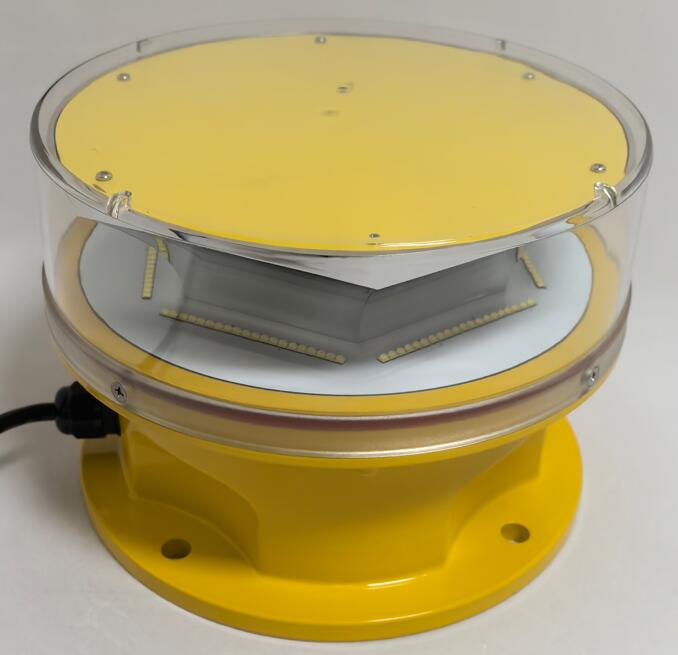As air traffic continues to grow and urban landscapes expand upward, the need for reliable aviation safety measures becomes increasingly vital. Among these, obstruction light bulbs play a fundamental role in marking tall structures and preventing collisions. Unlike standard lighting, these specialized bulbs are designed for high visibility, durability, and compliance with strict aviation regulations. This article explores the significance, types, and technological advancements of obstruction light bulbs, highlighting their essential function in modern infrastructure and airspace safety.
Why Obstruction Light Bulbs Matter
Obstruction light bulbs are not ordinary light sources—they are engineered to ensure that tall structures such as communication towers, wind turbines, and skyscrapers remain visible to pilots at all times. Their primary purposes include:
Enhancing Aviation Safety – By illuminating obstacles, they help pilots navigate safely, especially in low-visibility conditions.

Meeting Regulatory Requirements – Aviation authorities mandate their use on structures above certain heights.
Ensuring Reliability – Unlike conventional bulbs, they are built to withstand extreme weather and operate continuously.
Without obstruction light bulbs, the risk of mid-air collisions would increase significantly, making them a non-negotiable component of modern infrastructure.
| obstruction light bulbs |
Types of Obstruction Light Bulbs
Different applications require different types of obstruction light bulbs, categorized mainly by intensity and color. The most common classifications include:
1. Red Obstruction Light Bulbs (L-810)
Used for low-intensity applications on structures under 45 meters (148 feet).
Emit a steady red glow for nighttime visibility.
Commonly found on buildings, cranes, and small towers.
2. Medium-Intensity Obstruction Light Bulbs (L-864/L-865)
Designed for structures between 45 and 150 meters (492 feet).
| obstruction light bulb |
Available in steady red or flashing white variants.
Often installed on telecom towers and mid-sized industrial structures.
3. High-Intensity Obstruction Light Bulbs (L-856/L-857)
Required for structures exceeding 150 meters.
Produce bright white flashes visible from long distances.
Used on skyscrapers, large wind turbines, and major broadcast antennas.
4. Dual-System Light Bulbs
Combine steady red and flashing white bulbs for optimal visibility.
Typically used on extremely tall or complex structures.
Key Features of High-Quality Obstruction Light Bulbs
Not all light bulbs are suitable for aviation safety. Effective obstruction light bulbs must meet stringent criteria, including:
High Durability – Resistant to weather extremes such as storms, ice, and UV exposure.
Long Lifespan – Engineered to last thousands of hours with minimal maintenance.
Energy Efficiency – Many modern bulbs use LED technology to reduce power consumption.
Regulatory Compliance – Must adhere to standards set by ICAO, FAA, and EASA.
Technological Advancements in Obstruction Light Bulbs
The evolution of obstruction light bulbs has led to significant improvements in performance and reliability:
LED Technology – Modern LED-based bulbs offer brighter illumination, lower energy use, and longer lifespans than traditional incandescent or halogen bulbs.
Solar-Powered Options – Ideal for remote locations, solar-powered bulbs reduce dependency on electrical grids.
Smart Monitoring – Some advanced bulbs include self-diagnostic features to alert maintenance teams of failures.
Adaptive Lighting Systems – Automatically adjust brightness based on ambient light conditions to optimize visibility while reducing light pollution.
Challenges and Future Trends
Despite their effectiveness, obstruction light bulbs face several challenges:
Maintenance Accessibility – Replacing bulbs on extremely tall structures can be logistically difficult and costly.
Light Pollution Concerns – Excessive brightness can affect nearby communities, leading to stricter regulations.
Environmental Factors – Harsh climates (extreme heat, cold, or saltwater exposure) can impact bulb longevity.
Future innovations may include:
Self-Cleaning Coatings – To prevent dirt and debris from reducing visibility.
Wireless Connectivity – Enabling real-time status updates and remote diagnostics.
Enhanced Sustainability – Further improvements in energy efficiency and recyclability.
Obstruction light bulbs are a small but crucial component of aviation safety, ensuring that pilots can identify and avoid potential hazards. From towering skyscrapers to offshore wind farms, these specialized bulbs provide the visibility needed to prevent accidents and comply with international regulations. As technology advances, obstruction light bulbs will continue to evolve, becoming even more efficient, durable, and intelligent—further safeguarding the skies for years to come.
By understanding their importance, we can better appreciate how these unassuming yet vital bulbs contribute to safer air travel and infrastructure development worldwide.